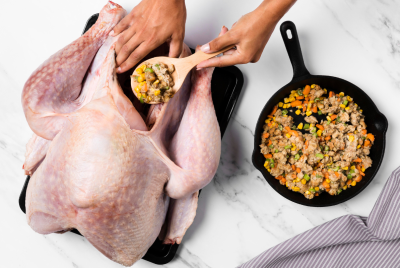UK retail sales volume slips by nearly 1% in March due to unfavourable weather
The UK saw a 0.9% drop in retail sales volumes in March as a result of poor weather. However, the 3-month trend presents an optimistic outlook for retailers.

UK retail sales volumes fell by 0.9 per cent in March, according to the Office for National Statistics (ONS), falling short of economists' projections of a 0.5 per cent monthly decline. This was attributed to the adverse weather conditions that affected sales in almost all sectors, including clothing retailers, department stores, and garden centres. Even food sales saw a decline due to the ongoing effects of excessive food inflation on consumer behaviour.
However, the three-month trend is positive for the first time since August 2021, said Darren Morgan, Director of Economic Statistics for the ONS. The overall trend is less subdued due to good performances by merchants in January and February.
Nick Delis, Senior VP of International and Strategic Business, Five9, argues that despite the recent dip, there is hope because of the impending coronation and mild weather. In his opinion, retailers need to provide more than just price wars and lockouts to make customers feel valued and encourage loyalty.
"Competitive price wars and locks on value items are the obvious response from retailers in today's climate. Yet, a closer, more in-depth look reveals that retaining customer loyalty or earning new business requires more creative action," the Senior VP of Five9 said.
Delis emphasised that companies must think creatively, and price points aren't always the key to building brand loyalty. One bad experience could cause a customer to never return, regardless of whether an item is less expensive.
He noted that as the UK's cost-of-living situation worsens, consumers continue to keep their spending to a minimum. However, with the coming coronation and better weather, shops have a lot to look forward to in terms of increased spending. The most important thing is ensuring they continue to appeal to customers and keep them returning for more.
He added that retailers are currently juggling higher discounts and longer sales periods and creating their own supply and demand matrices.
The senior VP suggested that in order to make customers feel appreciated, communication should be adapted and personalised to them. This could be done through loyalty programs and prompt, helpful responses to inquiries.
According to him, consistent, considerate and fantastic experiences that put customers at the forefront of minds will help businesses build a loyal client base with long-term sustainability.
The British Retail Consortium (BRC) reported that last month's retail sales increased by 5.1 per cent, compared to a 3.1 per cent growth in March 2022, as a result of shoppers scrambling for Mother's Day gifts. This number is higher than the three-month growth average of 4.8 per cent and the 12-month growth average of 2.6 per cent.
An abnormally wet March resulted in lower sales in the DIY and fashion industries as consumers were cautious about investing in new spring clothes. While Mother's Day boosted sales for the month, the wettest March in more than 40 years slowed growth for fashion, gardening, and DIY products, according to Helen Dickinson, chief executive of the BRC.
Retail sales volumes in the UK climbed by 1.2 per cent in February 2023 compared to a growth rate of 0.9 per cent in January 2023, as shown in the ONS March report. The increase in food and non-food shop sales volumes was primarily responsible for the acceleration in growth rate.
According to the report, sales for February 2023 were down 3.5 per cent from the same time the previous year. Additionally, the ONS stated that sales decreased by 0.3 per cent from the preceding three months in the three months leading up to February 2023.
Sales volumes for non-food retailers, including clothes and home products, increased by 2.4 per cent in February due to a strong showing by discount department stores.
Following a 0.1 per cent increase in January 2023, sales volumes for food retailers grew by 0.9 per cent in February 2023. Online merchants made up the majority of non-store retailers throughout the month, whose sales increased by 0.2 per cent, while the percentage of online sales remained unchanged at 25.4 per cent compared with 25.3 per cent in January 2023.
Indeed, retailers are facing an ever-evolving landscape where consumers are seeking higher discounts and longer sales periods. The challenge for retailers is to balance the supply and demand matrices effectively, ensuring that they can meet the demand while also maintaining profitability.
With the rise of e-commerce and ever-changing consumer behaviours, retailers need to be agile and adapt to the changing market conditions. As the retail industry continues to navigate through this uncertain terrain, it will be interesting to observe how they respond and what strategies they employ to stay ahead of the competition.
© Copyright IBTimes 2025. All rights reserved.






















